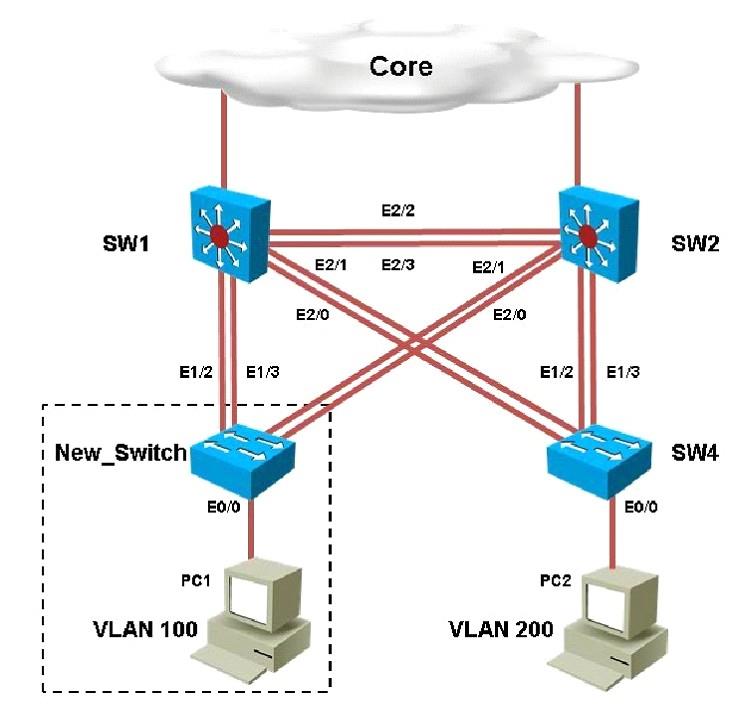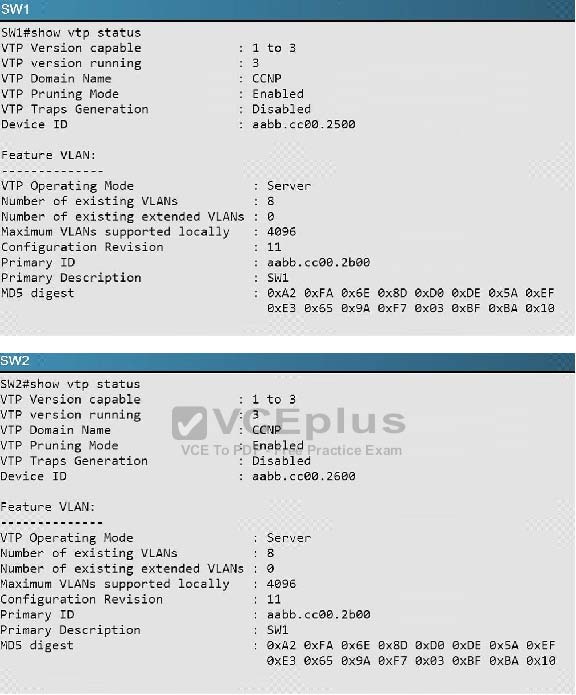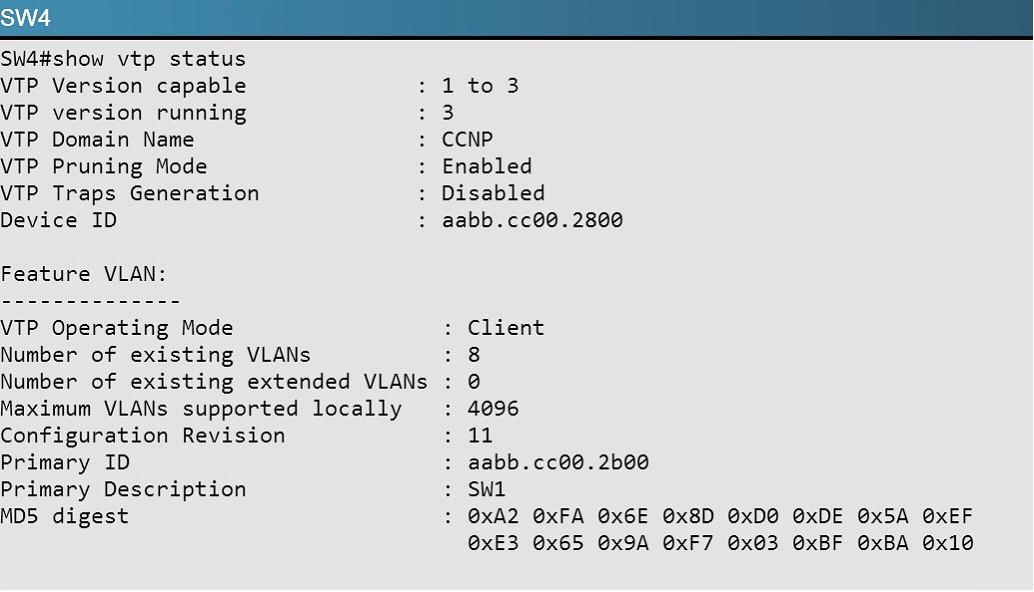You have been asked to install and configure a new switch in a customer network. Use the console access to the existing and new switches to configure and verify correct device configuration.

You are adding new VLANs. VLAN500 and VLAN600 to the topology in such way that you need to configure SW1 as primary root for VLAN 500 and secondary for VLAN 600 and SW2 as primary root for VLAN 600 and secondary for VLAN 500. Which configuration step is valid?
A. Configure VLAN 500 & VLAN 600 on both SW1 & SW2
B. Configure VLAN 500 and VLAN 600 on SW1 only
C. Configure VLAN 500 and VLAN 600 on SW2 only
D. Configure VLAN 500 and VLAN 600 on SW1 ,SW2 and SW4
E. On SW2; configure vtp mode as off and configure VLAN 500 and VLAN 600; configure back to vtp server mode.




If you look under the “Feature VLAN” section, it says “Primary Description: SW1”. VTPv3 is running, SW1 is the primary, so the answer is B.
Also, known of the switches have the “Primary Server” role so SW1 would not have necessarily been the appropriate answer to choose. The switch that has the “Primary Server” role would have been the only switch to create the vlans from.
*none
if that is the case according to Moamer, then B and C will be correct. In this case, A is the best option. In practical, B and C are correct but you can only choose one answer.
Moamer, I agree with you, and I am starting to suspect the honesty of this site…
Moamer, you are right!
Should be B…
In VTP v3, you can add VLANs only on primary VTP server. In this case, it’s SW1. (Even though Device ID and Primary ID are different on SW1, but Primary Desccription says it’s SW1)… Confusing but still, it must be one primary